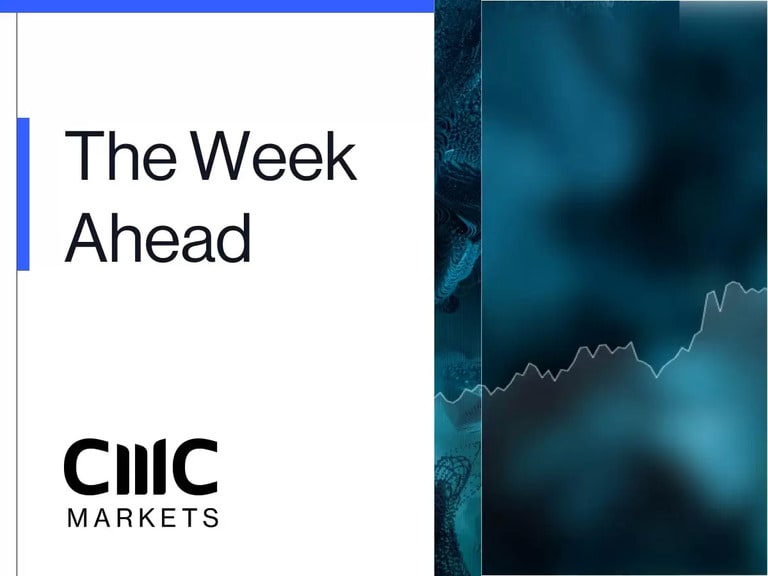It was another day of losses for European markets finishing lower for the fourth day in a row, as the hangover from Wednesday’s big drop showed little sign of abating.
With Germany slipping into recession, and core inflation showing few signs of slowing down there is increasing concern that central banks will need to continue hiking, thus slowing demand even further in the coming months. These concerns over falling demand were reflected in sharp falls in oil prices yesterday.
While the rise in German 2-year yields was modest in comparison to the US and UK, fears of stagflation or recession are increasing, with the UK economy looking ever more vulnerable to a sharp central bank induced slowdown in H2. UK 2-year gilt yields have surged in the past few days, and are up over 50bps month to date, and back at levels they were last October in the aftermath of Liz Truss’s budget.
US stock markets managed to finish the day higher, largely driven by the tech sector, and the stunning upgrade to Q2 revenue guidance by Nvidia which saw the shares finish the day 24% higher and at a record high, helping to drive the Nasdaq 100 sharply higher on the day.
With the notable exception of the tech sector there was little in the way of enthusiasm for other areas of the market, with still no sign of a resolution to the debt ceiling saga, although the resilience of US markets into the close yesterday should see markets in Europe open slightly higher later this morning.
Even with inflation having fallen to 8.7% earlier this week, the slowdown will be scant comfort to consumers who are having to bear the brunt of food price inflation over 10% higher. It is therefore surprising that they have remained as resilient as they have. In January we saw a surprise gain of 0.9%, followed by an even more solid performance of 1.1% in February. It wasn’t too much of a surprise to see a -0.9% decline in the March retail sales numbers with economic activity suppressed somewhat by wet weather as widespread strike action amongst healthcare and transport staff, which would have suppressed spending across the board.
As Q2 gets under way the Easter holidays will probably have seen an uplift, however the bigger question given that we have seen strike action ripple over into April is how much that has acted as a lag. The recent CBI retail sales numbers did show a modest improvement in April, as did the latest British Retail consortium numbers, so it’s unlikely that retail sales will be worse than March. Expectations are for a rise of 0.3%.
While the UK consumer is feeling the effects of much higher prices than the US it should also be remembered that inflation in the US peaked much earlier, back in the summer, which means it could take another five months before UK prices fall to US levels, and even then, core prices might not come down in a hurry.
On the topic of US inflation, recent hawkish rhetoric from several Fed policymakers’ expectations of another rate hike have risen in recent days, with yesterday’s revision to US Q1 GDP core PCE to 5%, only serving to reinforce the idea that a pause may well not be coming quite yet.
Today’s personal spending, as well as core PCE deflator numbers for April could go some way to softening this expectation or cementing it further. In the March numbers we saw PCE core deflator remain sticky at 4.6%, slipping only modestly from 4.7%. PCE Deflator has been slightly less rigid, slipping from 5% to 4.2%. That said, yesterday's revisions to US Q1 GDP merely served to reinforce the strength of the US economy.
Nonetheless, evidence that prices have peaked in the short term is still encouraging in terms of reflecting an expectation that rates probably won’t go much higher. The last 5-months has seen US PCE core deflator remain steady at between 4.6% and 4.7%, having fallen from 5% in October. We now want to start seeing evidence of further weakness as we look to head back towards 4%, however recent spending data would suggest that this remains unlikely.
April personal spending is expected to rise to 0.5% from 0% in March, while core PCE deflator is expected to come in unchanged at 4.6%. The Fed won’t want to see an increase in this headline rate, and will be hoping for no change at worst, and a slower rate of increase at best, especially with US 2 year yields above 4.5% and up over 50bps month to date
CMC Markets erbjuder sin tjänst som ”execution only”. Detta material (antingen uttryckt eller inte) är endast för allmän information och tar inte hänsyn till dina personliga omständigheter eller mål. Ingenting i detta material är (eller bör anses vara) finansiella, investeringar eller andra råd som beroende bör läggas på. Inget yttrande i materialet utgör en rekommendation från CMC Markets eller författaren om en viss investering, säkerhet, transaktion eller investeringsstrategi. Detta innehåll har inte skapats i enlighet med de regler som finns för oberoende investeringsrådgivning. Även om vi inte uttryckligen hindras från att handla innan vi har tillhandhållit detta innehåll försöker vi inte dra nytta av det innan det sprids.






